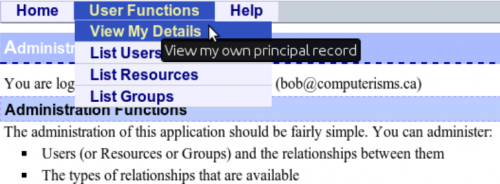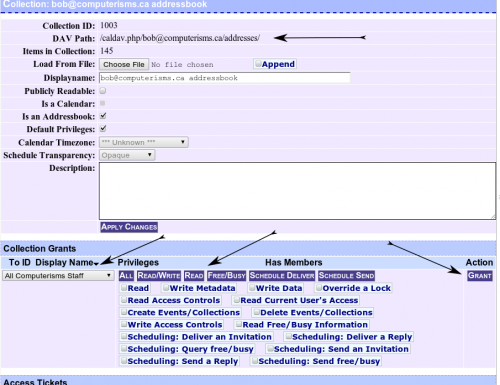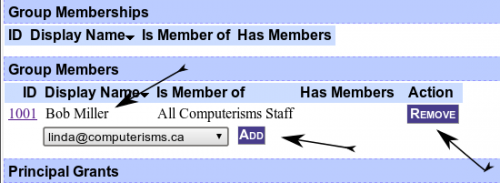Shared Address Book: Difference between revisions
Jump to navigation
Jump to search
| Line 157: | Line 157: | ||
*Set the Principal Type to be group | *Set the Principal Type to be group | ||
*Set permissions | *Set permissions | ||
**Every user will have these permissions on any | **Every user will have these permissions on any address book this group owns. | ||
*When everything is to your satisfaction, click the create button | *When everything is to your satisfaction, click the create button | ||
|[[File:Help.davical.create.group.png|center|500px]] | |[[File:Help.davical.create.group.png|center|500px]] | ||
| Line 164: | Line 164: | ||
| | | | ||
*After you click the create button, you will be brought to a page where you can manage your group | *After you click the create button, you will be brought to a page where you can manage your group | ||
*On this page, you may create a new | *On this page, you may create a new address book or calendar that will be owned by this group | ||
**Permissions can then be granted to other groups and users on those created calendars | **Permissions can then be granted to other groups and users on those created calendars | ||
*To add members to the group, scroll down to the Group Members section | *To add members to the group, scroll down to the Group Members section | ||
| Line 170: | Line 170: | ||
**Previously Added members will show up just above the drop down menu | **Previously Added members will show up just above the drop down menu | ||
**Remove members from the group by pressing the remove button | **Remove members from the group by pressing the remove button | ||
*Now, [[#I Need My Assistant To Edit My | *Now, [[#I Need My Assistant To Edit My Address Book|when granting permissions to other user]] you may grant a group access to an address book instead of a user | ||
|- | |- | ||
| | | | ||
Revision as of 19:08, 1 August 2012
- Setting up Shared Address Books is a two part process
- First, you must log into the server interface to create the address books and grant permission to other user to access them
- The act of logging in will create a default calendar and address book for that user.
- It is required that a user log in before he can be granted permissions to any address books
- Then you need to configure your CardDAV client to access the address books you created
- There is no web interface for the address books, you must access them through a client such as thunderbird or webmail.
- This interface is a little bit overwhelming at first, but so is the number of things you can do with it
- This page will not show you everything you can do, but it should show you some of the basic functions without making you learn all there is to know.
I Just Want an Address Book That All My Devices Will Sync With
|
 |
 |
*Ignore the contents of this page for now, at the top of the page, put your mouse on UserFunctions and then select "View My Details" |
|
 |
 |
|
|
 |
I Need More Address Books
|
 |
 |
*Ignore the contents of this page for now, at the top of the page, put your mouse on UserFunctions and then select "View My Details" |
|
 |
 |
|
|
 |
Address Book Permissions
- All address books must be created by a user and therefore owned by a user.
- That user will then grant permissions to other people, identified by their email address or group, to read and/or modify their address books
- The user being granted permission will use his own email address and email password to access your address books
- you may create groups to manage users more easily
I Need My Assistant To Edit My Address Book
Before you begin:
- Your Assistant must have logged into the server at https://cal.domain.tld at least once.
|
 |
 |
*Ignore the contents of this page for now, at the top of the page, put your mouse on UserFunctions and then select "View My Details" |
|
 |
 |
|
|
 |
 |
|
I have many users and many address books, How do I use groups to ease management?
Before you begin:
- You must be logged in as an administrative user (Typically that is the email of the person who owns the domain name)
- You may "nest" groups - which means you may make a group a member of another group, and then that group may be a member of another group.
- If nesting groups go through too many layers, it will slow the server down.
- Rather than have me come ask you to redo your groups, please do not add groups that already have a group to a new group. In other words, do not nest more than one deep.
|
 |
 |
|
|
 |
 |
|
|
 |